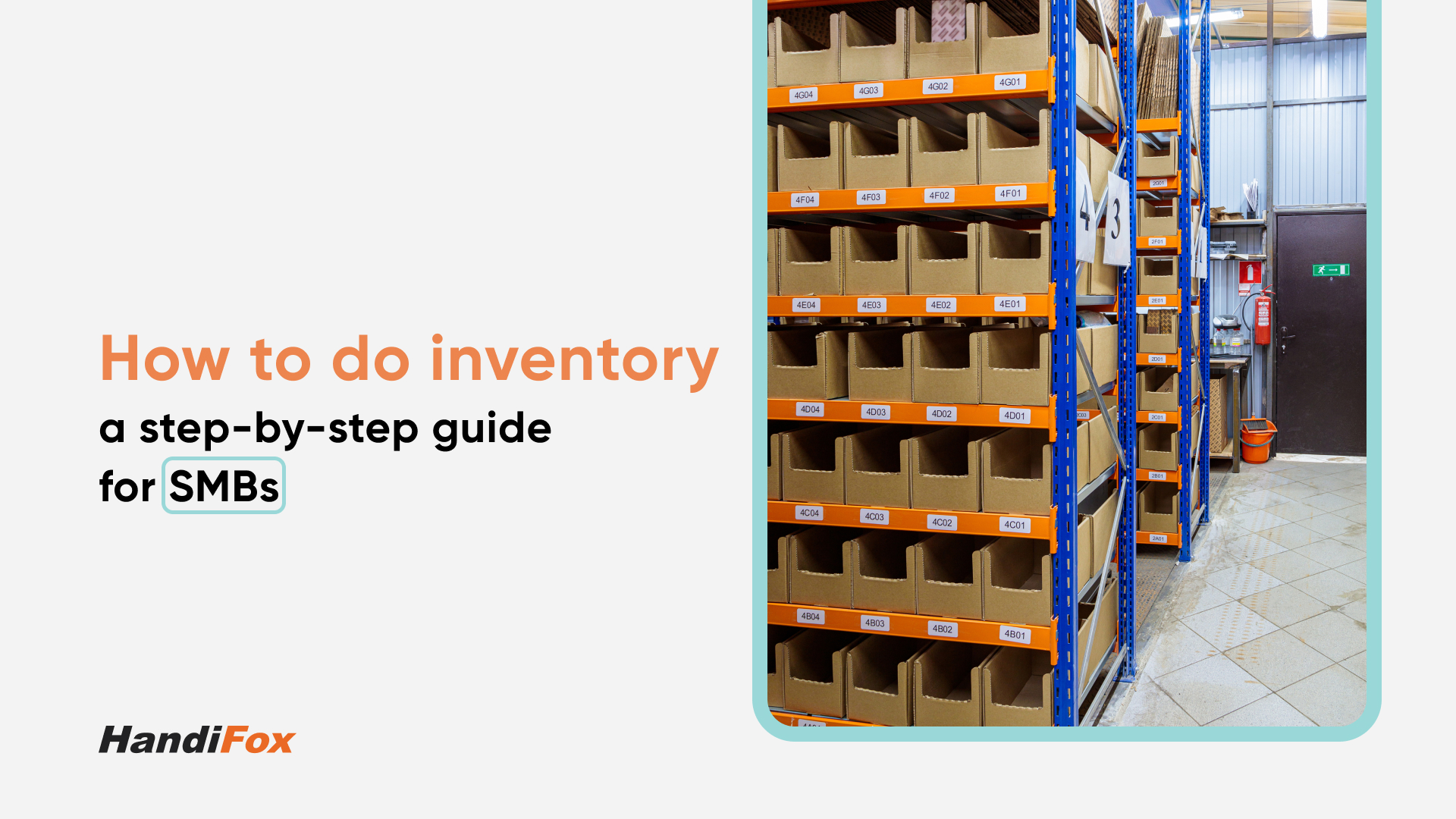
Keeping an accurate inventory is one of the most fundamental parts of running a successful small business. It determines how well you serve customers, how much capital is tied up in stock, and how reliable your financial reports are.
Yet, for many small companies, inventory counts still mean a long day of spreadsheets, manual tallies, and misplaced items. Errors in counts can snowball into problems with cash flow, forecasting, and even tax reporting.
In this article, we’ll walk you through how to perform an inventory count efficiently, from preparation to reconciliation—and show how modern mobile tools like HandiFox make the process faster, more accurate, and fully integrated with QuickBooks.
Related reading: How to Count Inventory: 5 Simple Steps
Why Regular Inventory Counts Matter
No matter how advanced your system is, inventory records degrade over time without regular checks. Performing consistent counts offers three critical benefits:
- Prevents stockouts and overstock. You’ll know what’s really available before placing orders or committing to sales.
- Keeps financial data accurate. Regular reconciliation ensures that what’s on paper matches what’s on shelves.
- Supports better forecasting. Reliable data improves demand planning and helps you restock with confidence.
Regular counting also builds trust between the warehouse, accounting, and sales teams, where everyone operates from the same source of truth.
Preparation Before Counting
A successful count starts long before the first barcode scan. Proper preparation ensures accuracy and minimizes downtime.
Organize Storage Locations
- Label shelves, bins, and aisles clearly for easy navigation.
- Freeze product movement during counts to avoid confusion.
- Group similar items together to speed up scanning and verification.
Clean Up Your Item Data
- Verify that every item has a correct SKU, barcode, and unit of measure.
- Remove duplicates and deactivate obsolete items in your inventory system.
- Print updated count sheets or prepare digital lists in advance.
Assign Counting Teams
- Designate counters, verifiers, and approvers to keep roles clear.
- Train each participant on how to record data consistently.
- Establish a chain of command for discrepancy resolution.
Step-by-Step: How to Do an Inventory Count
- Define Your Scope
Decide whether you’ll count your entire inventory or focus on specific categories, warehouses, or ABC classes. - Pick the Right Time
Schedule the count during low activity—after working hours, over weekends, or during seasonal slowdowns. - Prepare Counting Sheets or Mobile Sessions
If you’re using spreadsheets, print them with SKU, item name, and location. If using software like HandiFox, create a mobile counting session and assign it to team members. - Count and Verify
Physically count each item and record quantities. Always perform double verification by having another person recheck high-value or high-volume items. - Reconcile Results
Compare the counted quantities with system data. Investigate variances, adjust records, and sync the updated information to your accounting software.
Check out: How to Take Products Into and Out of Inventory in HandiFox Online
Manual vs Digital Counting
For many small businesses, counting still happens with paper and spreadsheets—and while this method feels familiar, it’s also prone to errors, lost data, and time delays.
Manual Counting
- Pros: Low cost, no need for devices or training.
- Cons: Duplicate entry, slow reconciliation, and higher risk of mistakes.
Digital Counting with Mobile Devices
Using barcode scanners or mobile inventory apps significantly reduces manual effort. With HandiFox, for instance, every scan updates quantities in real time, and data syncs automatically once connected to QuickBooks.
Benefits include:
- Faster counts and fewer errors.
- Live updates are accessible to accounting and sales teams.
- Ability to work offline and sync later.
Learn more: The Ultimate Beginner’s Guide to Mobile Inventory Management
How HandiFox Simplifies the Process
Performing inventory counts with HandiFox turns what used to be a full-day process into a structured, collaborative workflow.
Key advantages:
- Mobile counting sessions: Teams can count on smartphones or tablets, even without internet access.
- Cycle or full counts: Choose between daily mini-checks or complete physical counts.
- Automatic synchronization: All updates push directly to QuickBooks, eliminating the need for manual imports.
- Role-based permissions: Managers can approve sessions and adjust results instantly.
HandiFox keeps all stakeholders connected, ensuring that warehouse activity, accounting, and customer fulfillment work in sync.
Case Study: Easy Mile Fitness
Easy Mile Fitness, a U.S.-based retailer of fitness equipment, used to manage inventory manually across multiple store locations. Each branch kept separate spreadsheets, and the head office spent hours consolidating data.
After implementing HandiFox, the company experienced:
- 60% faster stock counts thanks to barcode-enabled mobile sessions.
- Improved accuracy across 50+ locations.
- Real-time visibility of stock and movement across all branches.
- Seamless integration between warehouse operations and QuickBooks accounting.
By digitizing inventory counts, Easy Mile Fitness turned a tedious monthly process into a smooth, automated workflow that supports growth.
Read the full story: Easy Mile Fitness – Scaling From 8 to 53 Locations With HandiFox
Conclusion
Inventory counting doesn’t have to be stressful. By planning properly, organizing your data, and using mobile inventory tools, small businesses can achieve higher accuracy and efficiency.
Manual methods might still work for very small operations, but as soon as data accuracy starts to matter for cash flow and forecasting, automation becomes the smarter choice.
HandiFox bridges the gap between inventory and accounting, helping businesses count faster, eliminate errors, and keep QuickBooks perfectly in sync.
With the right system in place, you’ll move from guesswork to clarity, knowing exactly what’s in stock, where it’s located, and how it impacts your bottom line.



.svg)













